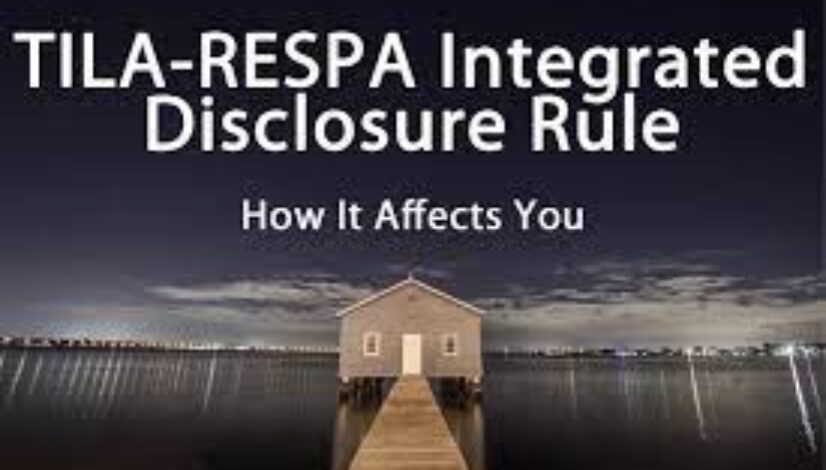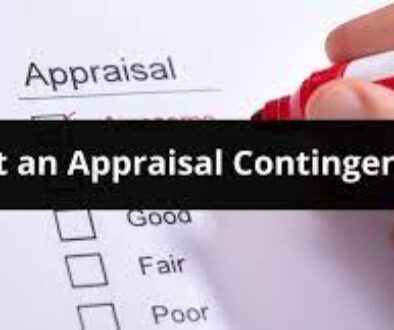TILA-RESPA Integrated Disclosures
During your hunt for a mortgage, you might come across the term “TRID,” or the phrase “Know Before You Owe” – but you may not really understand what it means. Short for TILA-RESPA Integrated Disclosures, these guidelines are important to understand before you get a mortgage.
Let’s take a look at what TRID is and how it protects home buyers.
What Is TRID In Real Estate?
TRID is a series of guidelines enforced by the Consumer Financial Protection Bureau that attempts to close loopholes some lenders have used against consumers. These rules specify the mortgage information lenders must provide to borrowers and when they need to send it. TRID also regulates lenders’ fees and how they can charge them as the mortgage matures.
The program intends to help borrowers better understand their mortgage options and more effectively choose a mortgage lender that has their best interests in mind. As of 2015, all mortgage lenders need to follow TRID rules when they issue a mortgage or offer an estimate.
TRID rules are also informally referred to as “Know Before You Owe” rules. This is because they address information on mortgages, credit and fees that consumers should read and understand before they make an offer on a house and consent to monthly loan payments.
What Disclosures Does TRID Require?
When you’re looking for a mortgage,TRID guidelines require your mortgage lender to provide you with two unique disclosures: the Loan Estimate and the Closing Disclosure.
The Loan Estimate
A Loan Estimate is an estimation of the principal, interest rates, closing costs and mortgage features that the borrower qualifies for. Though Loan Estimates may change from the beginning of the mortgage process to the end, the lender can’t significantly vary the agreement terms and must provide this good faith estimate during the preapproval process.
You can use Loan Estimates from multiple mortgage companies to get a feel for how much house you can afford and who can offer the lowest rates. If you receive a Loan Estimate from a lender, you don’t have to work with that lender if you decide a competitor’s offer is better.
The Closing Disclosure
As its name suggests, you receive your Closing Disclosure when it’s time to sign and finalize your mortgage. The Closing Disclosure lays out the same ideas as the Loan Estimate, including specific interest rates, principal amounts, closing costs, and terms.
You should compare your Loan Estimate to your Closing Disclosure, and both documents should be similar. If your rates, fees or principal have changed drastically from the Loan Estimate, ask the lender why – for example, taxes and insurance estimates may have changed.
How Do Loan Estimates And Closing Disclosures Protect Buyers?
TRID guidelines can help you avoid unfair lending practices and mortgage scams,like so-called “bait-and-switch” schemes. A bait-and-switch scheme is when a mortgage lender offers a borrower a great loan, low closing costs or interest rates, or a “no-fee” loan estimate, only to switch their offer and present a completely different set of terms and conditions when it’s time to close.
TRID regulations attempt to eliminate lender bait-and-switches by requiring lenders to offer concise fee summaries, good faith estimates and plenty of time for borrowers to read the contract.
What Are The TRID Rules And Guidelines?
Most mortgage lenders must follow TRID guidelines when offering borrowers a loan. These include:
- The elimination of application fees: Under TRID rules, a mortgage lender can’t charge a fee before they offer you a Loan Estimate. The only fee a lender may charge before issuing a Loan Estimate is a fee to run your credit report.
- Quick delivery of the Loan Estimate: Your lender must issue your Loan Estimate within 3 days after receiving your application. This is to allow borrowers time to ask their loan origination any additional questions they may have.
- Maintenance of estimates and disclosures on file: Your lender must keep a copy of your Loan Estimate for at least 3 years after you sign your mortgage. They must also keep a copy of your Closing Disclosure for at least 5 years after you sign your loan.
- A 3-day waiting period for your Closing Disclosure: Your mortgage lender must provide your Closing Disclosure at least 3 business days before you sign on your loan. If you request changes to your Closing Disclosure, your mortgage lender must provide you with a new contract, and you’ll need to wait an additional 3 business days until you can finalize the loan.
- Contact information: Your lender must provide their contact information and a way to contact their loan officer in your Loan Estimate.
What Is The History Of TRID?
Though TRID guidelines are relatively new, there are a few basic legal requirements that have governed lenders for over 4 decades. TRID is actually a combined and condensed version of two such regulations: the Truth in Lending Act (TILA) and the Real Estate Settlement Procedures Act (RESPA).
The Truth In Lending Act (TILA)
The government introduced TILA regulations in 1968 to discourage dishonest credit lending practices. TILA, and its subsequent Truth-in-Lending disclosures, protects you from unfair credit and credit card billing practices by requiring lenders to offer written documentation on your loan well before you must sign to lock the rate.
For most types of loans, TILA requires lenders to provide upfront information about interest rates and payments before you sign on. This act also gives you a grace period of at least 3 days in which you can back out of the loan without losing money – also known as the right of rescission. TILA doesn’t tell lenders how much they may charge in interest, but it does give borrowers the opportunity to compare lenders before making a decision.
The Real Estate Settlement Procedures Act (RESPA
RESPA regulates settlements and protects you from unfair real estate practices. Under RESPA regulations, mortgage lenders must provide information on settlement services, consumer protection laws and real estate transactions before you borrow money, so you can more accurately estimate your ongoing fees and expenses.
RESPA also eliminates the practice of “kickbacks,” or referral commissions, that can inflate the cost of your loan at the last minute. Finally, RESPA also governs the use of escrow accounts. These accounts hold money in a third-party space, release only under specific conditions and prohibit lenders from demanding large amounts of money held in escrow before the loan is approved.
How TRID Creates A Faster Mortgage Process
The government put TRID rules into place – combining four required disclosures into two easy-to-read documents – in an effort to help simplify and speed up the mortgage process. The Loan Estimate and Closing Disclosure replaced four documents that lenders used to provide: the Truth-in-Lending (TIL) statement, the Good Faith Estimate (GFE), the Truth-in-Lending disclosure and the HUD-1 statement.
What Does TRID Mean For Home Buyers?
As the borrower, TRID regulations protect you against high-pressure or unfair sales tactics, and they ensure you know exactly what you’re signing on for when you agree to a loan. However, TRID also introduces a new layer of responsibilities that you need to uphold when buying a house, just like your lender must remain fair and transparent. When you decide on a lender, you need to contact your mortgage provider of choice and sign an Intent to Proceed document.
If you wait to inform your lender that you have the document, you might prolong finalizing the sale. Staying in contact with your mortgage lender will speed up your borrowing process – and help your lender stay within the bounds of TRID regulations.
How Does TRID Affect Sellers?
As a seller, you’re not responsible for the practices of your buyer’s mortgage lender. However, you may see delays or last-minute closing cancellations if the buyer’s lender attempts to sign a loan against TRID regulations.
Due to new regulations, many lenders now say a home loan takes an average of 45 – 60 days to close due to mandatory waiting periods and disclosure timelines. If you’re selling your home, keep TRID regulations in mind while you plan your move – and remember to stay patient throughout the process.




